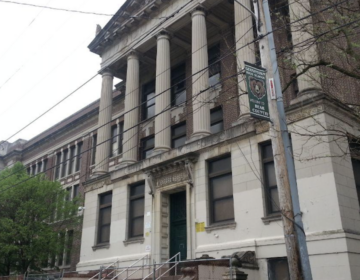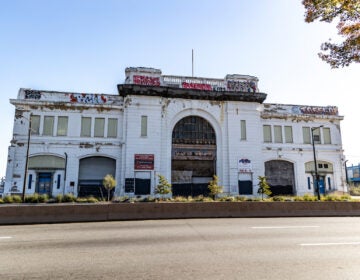Woodlands and beyond
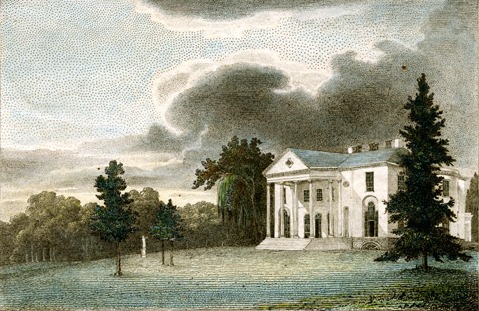
The Woodlands Mansion, in 1809 by William Birch from the Print and Picture (Castner) Collection, Free Library of Philadelphia
Feb. 17
Hamilton’s connection with the University of Pennsylvania
During the 18th Century, William Hamilton attended the College of Philadelphia, housed at the former Whitefield building at Fourth and Arch Streets in Center City. This structure was larger than the State House (now Independence Hall) and was the primary building for the college.
From 1751 to 1801, college classes were held at this location and eventually three buildings were constructed creating a true campus for one of the country’s first universities.
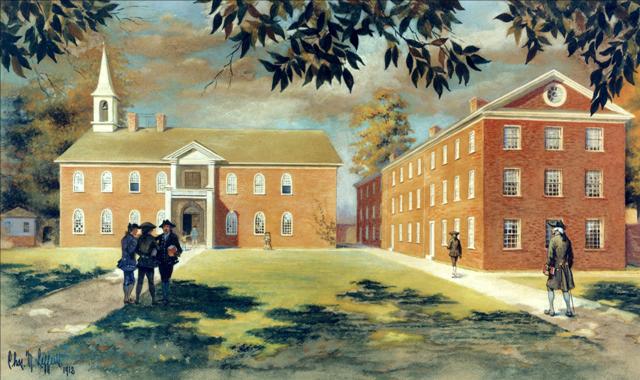
Reproduction of Penn campus at Fourth and Arch Streets with water color by Charles M. Lefferts, 1913(Penn Archives).
In 1801, the College moved to the President’s House at Ninth and Market. Now known as the University of Pennsylvania, the school expanded and grew to the other side of the Schuylkill River. In 1862, the trustees of the University of Pennsylvania bought around 10 acres, at nearly $8,000 per acre, from the City, which was raising money to fund construction of additional housing and health facilities for the City’s Alms House and Hospital next door. During the rest of the 19th Century, the City continued to sell more land to the trustees, which was originally part of The Woodlands Estate. Interestingly, the educational institution that William Hamilton attended would eventually come to own a major portion of his land around a hundred years later.
Thomas Evans
Thomas Wiltberger Evans (1823-1897) was a dental pioneer, with many achievements in the field. These include the use of gold as cavity fillings, introduction of nitrous oxide as an anesthetic and the first use of vulcanite rubber as a base for dentures. In 1848, Evans moved to Paris and became the dentist and confidant to Napoleon III and other members of European royal families. Working closely for various heads of state, Evans had an active role transmitting unofficial correspondence between kings and giving various advice to his clients.
It is believed that during the U.S. Civil War, Evans had a large role in convincing Napoleon III not to recognize the Confederacy. In addition to his dentistry, Evans was active in the Parisian real estate market, which earned him a great deal of wealth. When Evans’ died in 1897, he left his estate to the University of Pennsylvania to construct a world-class dental institution. Evans is remembered with a 150-foot obelisk in The Woodlands Cemetery, which is identified as the tallest funeral monument in America.
Dr. Samuel Gross and Thomas Eakins
One of the most recognizable paintings by Thomas Eakins, who was born in Philadelphia, is The Gross Clinic. Painted in 1875, Eakins spent nearly a year working on the portrait. The painting shows Dr. Samuel D. Gross lecturing to his students at an amphitheatre at Jefferson Medical College. Consequently, both Eakins and Gross are buried at The Woodlands a few hundred feet from one another.
Hamiltonville
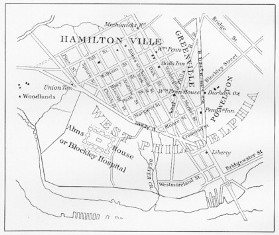
West Philadelphia in 1839, from the Map of Charles Ellet -Market Street, from the Schuylkill River to Mill Creek, at this time was known as Washington street. The streets in Hamiltonville bore the names of members of the Hamilton family (University City Historical Society).
Before the City Consolidation of 1854, Philadelphia County was made up of numerous townships and villages each with their own identity. Hamiltonville was no exception. For most of the city’s lifetime, the Delaware River had been a major source of wealth and prosperity. However, other developments sprung up in the area, including Germantown, Manayunk, and Hamiltonville, Greenville, Powelton and Mantua in West Philadelphia. Hamiltonville, refers to the family name of the owner of the grounds, was comprised of a couple dozen or so square blocks in the eastern portion of West Philadelphia. A description of Hamiltonville, before its incorporation into the District of West Philadelphia, indicates the esteem in which it was held:
“A handsome village of West Philadelphia, situated about one mile west of the Market street bridge. It is on the road to West Chester. Its plan is regular, and the streets, most of which are prolongations of those in the city, are wide and well regulated. The buildings, about eighty in number, generally stand apart from each other, leaving garden spaces between them. Taken altogether, Hamilton is probably the prettiest village in the neighborhood of Philadelphia. The dwellings are occupied principally by families who reside in the city during the winter season, or merchants and others, who reside here and transact business in the city.”
The roads in the village were named after Hamilton family members; there was Andrew Street, William Street, and Till Street, now know as Walnut Street, 40th Street, and 39th Street, respectively.
Over time, Hamiltonville became incorporated with the rest of West Philadelphia losing its distinct identity and part of its history.
– By Brandon Gollotti
Sources:
http://uchs.net/MarketStreet/jacksonxxv.html
http://www.archives.upenn.edu/histy/features/campuses/campus1.html
http://www.archives.upenn.edu/histy/features/alum/99_3.html
http://www.ushistory.org/presidentshouse/history/briefhistory.htm
WHYY is your source for fact-based, in-depth journalism and information. As a nonprofit organization, we rely on financial support from readers like you. Please give today.





